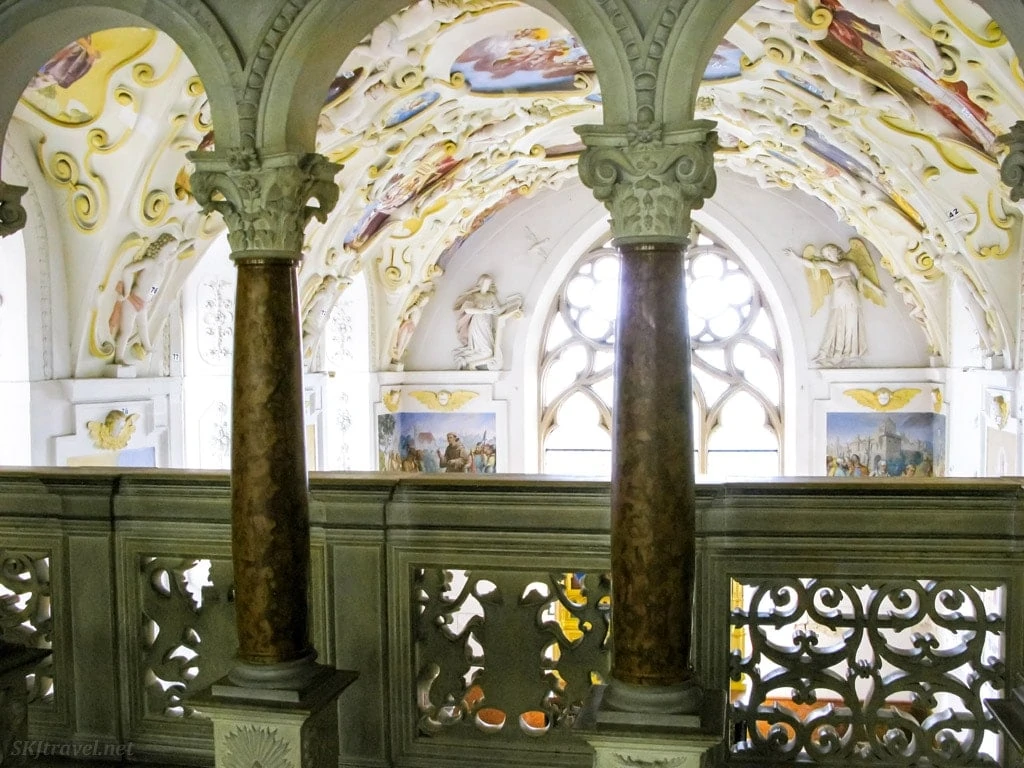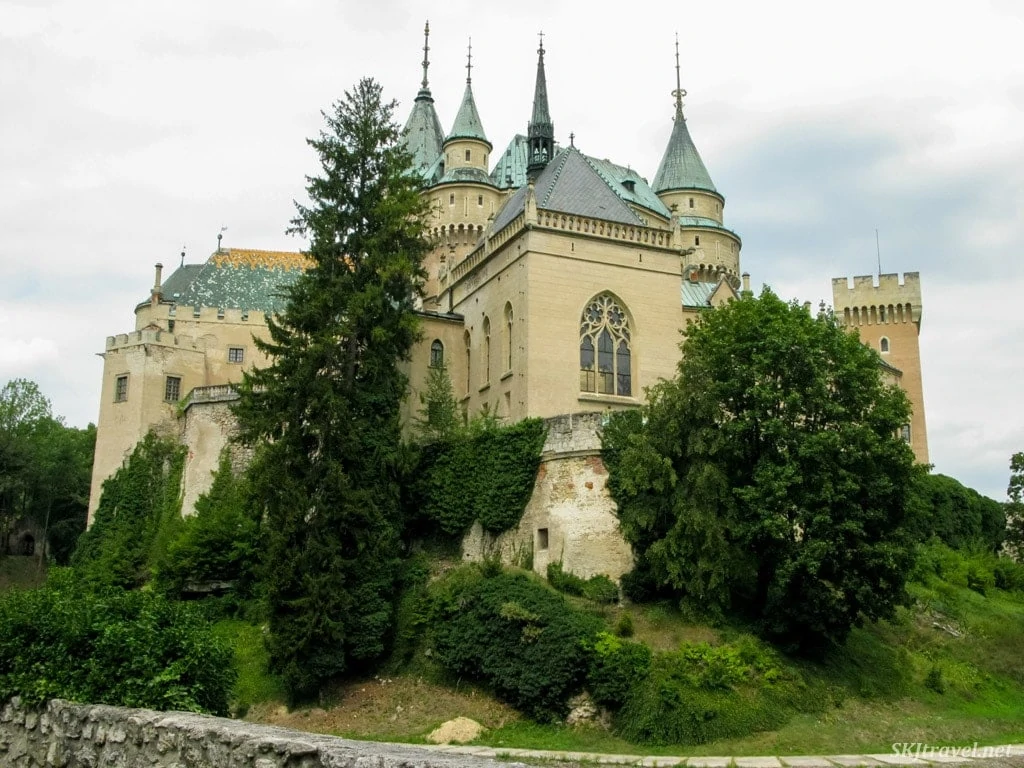This is a guest post by Shara Johnson of SKJ Travel.
If you want to know what it was really like living in a European castle, what more appropriate way is there to tour one than by candlelight at night? My husband and I were travelling in Slovakia during the time of one of his milestone birthdays, and in looking around for something extra special to do for the occasion, I happened upon a candlelight tour of Bojnice Castle in the town of Bojnice.
So we arrived in town in time for our booked tour. The tour kicked off with a nice glass of wine served in one of the many dining areas in the castle — red carpet and gold-gilded ceiling, you feel a bit like royalty right off.

The booking page for the night tour says it’s not suitable for children under 6. We didn’t know exactly why that might be until we started encountering spooks and ghosts in the dark rooms and hallways … one family on our tour had to leave it early because their child was too frightened by some of these unexpected encounters. So I encourage families to take the warning to heart.
My husband and I liked the place so much at night that we decided to come back to the castle the next day and walk through it in the daylight, which was very worth it. The night tour is more about the experience of a castle, whereas wandering through in the daytime is about appreciating the details and craftsmanship of the architectural features and furnishings.

Bojnice has a particularly diverse architectural history, having been owned by a succession of aristocratic families. It originated as a wooden fort in the 1100s and was gradually rebuilt with stone over the next couple centuries into a Gothic castle when it became privately owned. At a change of hands in the 1500s, the castle was remodelled with a classic Renaissance character.
In the 1600s, another change of hands expanded and remodelled it in the Baroque style. In the 1800s, the last aristocratic owner remodelled it once again into a “romantic” style castle, inspired by the castles of the Loire Valley in France. Whew! Few castles have weathered the fashionable whims of so many individuals over time.

What stood out to us the most was the abundance of very intricate woodwork — seen in ceilings, furniture, and especially panelling. The castle has a much lighter, airy feel than many castles. I appreciated that the stairs were very broad, winding up through a wide, well-lit corridor rather than a tiny tower with wedge steps and a pole in the middle.
As most castles do, Bojnice has a private chapel inside it with lofty, painted ceilings. The chapel, however, wasn’t built to worship in, but rather specifically to display 10 medieval painted panels that are considered the castle’s most valuable and historically significant feature. The last private owner of the castle discovered them in an antique shop in the mid 19th century. He was a fan and connoisseur of art and recognized their value. What a find!

In 1993 thieves stole five of the paintings. How? They pretended to be ordinary tourists but hid in the chapel balcony, where they were locked in for the night. They rappelled into the chapel and smuggled the paintings out through a window. They were eventually recovered when one of the thieves disclosed the location while bargaining for a lighter sentence for another crime he had committed.
After restoration in Prague and a battle with the Czech Republic for ownership, the panels were finally returned to Bojnice castle and installed.
The castle gallery showcases some of the best pieces in Slovakia’s museum collection, including paintings, sculptures, arts and crafts, weaponry, furniture and tapestry, covering the same span of time as the castle’s structure itself — from Gothic through Renaissance, Baroque to 19th-century Neo-style works.

A unique feature of the castle grounds, which is open to visitors, is a travertine cave underneath one of the courtyards. It contains a natural water pool which provided a convenient well for the castle.
After the second world war, it became the property of the state (then Czechoslovakia) and is now a Slovakia national museum.
Open hours vary by season, but generally 10 a.m. to 5 p.m. in summer and to 3 p.m. the rest of the year. Tickets for tours are reasonably priced, currently listed as 10 to 13 Euro for day tours and 11 Euro at night. (Night tours are temporarily suspended during the COVID pandemic but will resume once it’s safe to offer them again.)
Two different guided tours are offered during the day, or you can do the package tour that covers the ground of both of them. The concept of “tour” during the day is a loose one, though, which suited me and my husband perfectly.
You must start touring the castle at a specified time with a group and guide, but there is no one shooing you on and keeping you with the herd. We found ourselves free to wander at our leisure, taking our time climbing the many stairs.

There is only one tour per day guided in English and we missed it, but this didn’t bother or surprise us, as much of our time travelling through Slovakia was spent without the benefit of English text or speakers. But if this feature is important to you, inquire before arriving what time the English tour begins.
Overlooking the town of Bojnice, the castle is backed by forest and includes a park with some of the oldest trees in the country.
There are plenty of options near the castle for a bite to eat, so if you’re making a day of the area it’s very convenient, you can stay parked in the same spot. From the romantic view afar to the fine details within, a visit to Bojnice Castle is one of the essential activities for a visitor to Slovakia.
